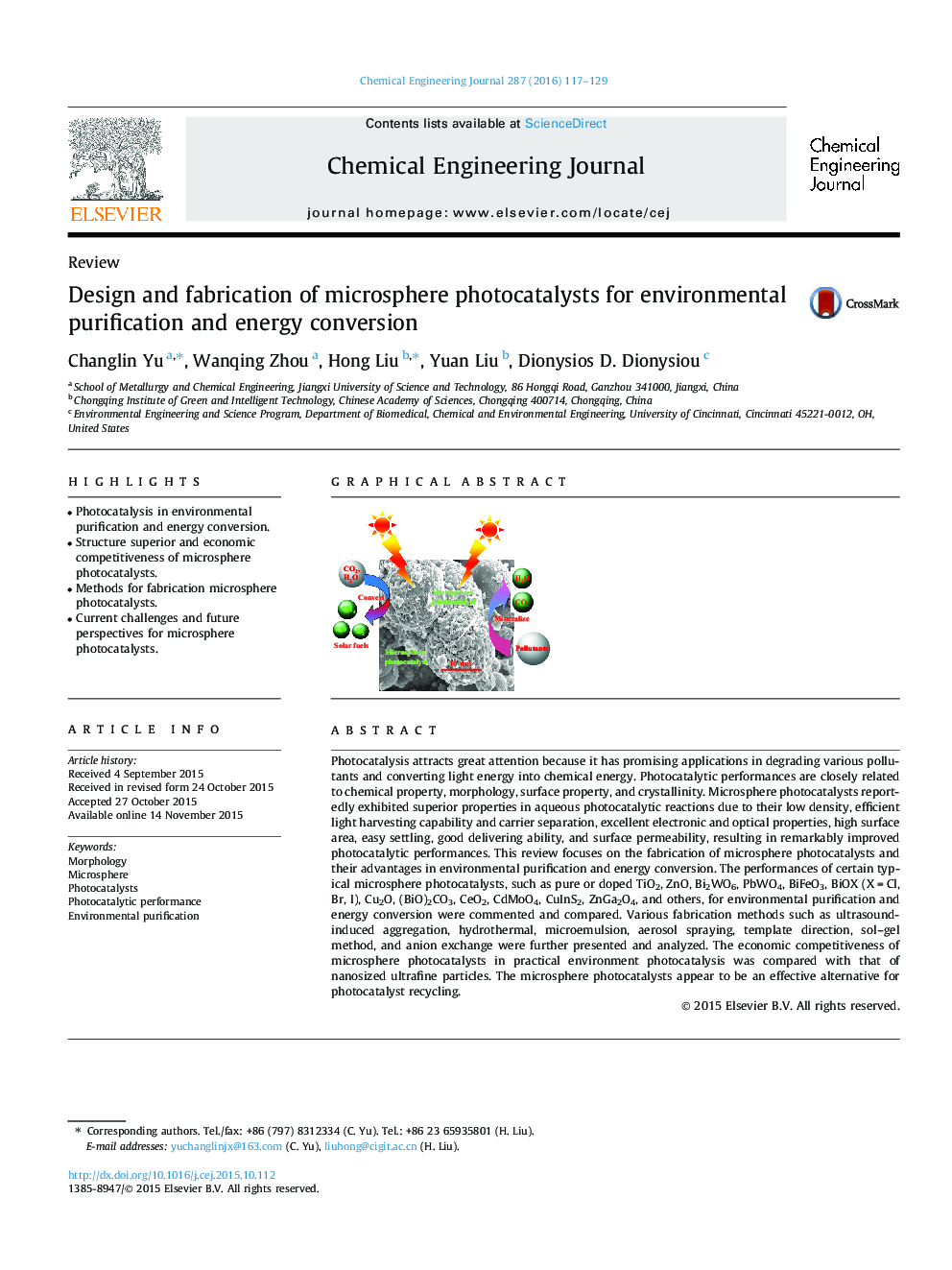| Article ID | Journal | Published Year | Pages | File Type |
|---|---|---|---|---|
| 145865 | Chemical Engineering Journal | 2016 | 13 Pages |
•Photocatalysis in environmental purification and energy conversion.•Structure superior and economic competitiveness of microsphere photocatalysts.•Methods for fabrication microsphere photocatalysts.•Current challenges and future perspectives for microsphere photocatalysts.
Photocatalysis attracts great attention because it has promising applications in degrading various pollutants and converting light energy into chemical energy. Photocatalytic performances are closely related to chemical property, morphology, surface property, and crystallinity. Microsphere photocatalysts reportedly exhibited superior properties in aqueous photocatalytic reactions due to their low density, efficient light harvesting capability and carrier separation, excellent electronic and optical properties, high surface area, easy settling, good delivering ability, and surface permeability, resulting in remarkably improved photocatalytic performances. This review focuses on the fabrication of microsphere photocatalysts and their advantages in environmental purification and energy conversion. The performances of certain typical microsphere photocatalysts, such as pure or doped TiO2, ZnO, Bi2WO6, PbWO4, BiFeO3, BiOX (X = Cl, Br, I), Cu2O, (BiO)2CO3, CeO2, CdMoO4, CuInS2, ZnGa2O4, and others, for environmental purification and energy conversion were commented and compared. Various fabrication methods such as ultrasound-induced aggregation, hydrothermal, microemulsion, aerosol spraying, template direction, sol–gel method, and anion exchange were further presented and analyzed. The economic competitiveness of microsphere photocatalysts in practical environment photocatalysis was compared with that of nanosized ultrafine particles. The microsphere photocatalysts appear to be an effective alternative for photocatalyst recycling.
Graphical abstractFigure optionsDownload full-size imageDownload as PowerPoint slide
